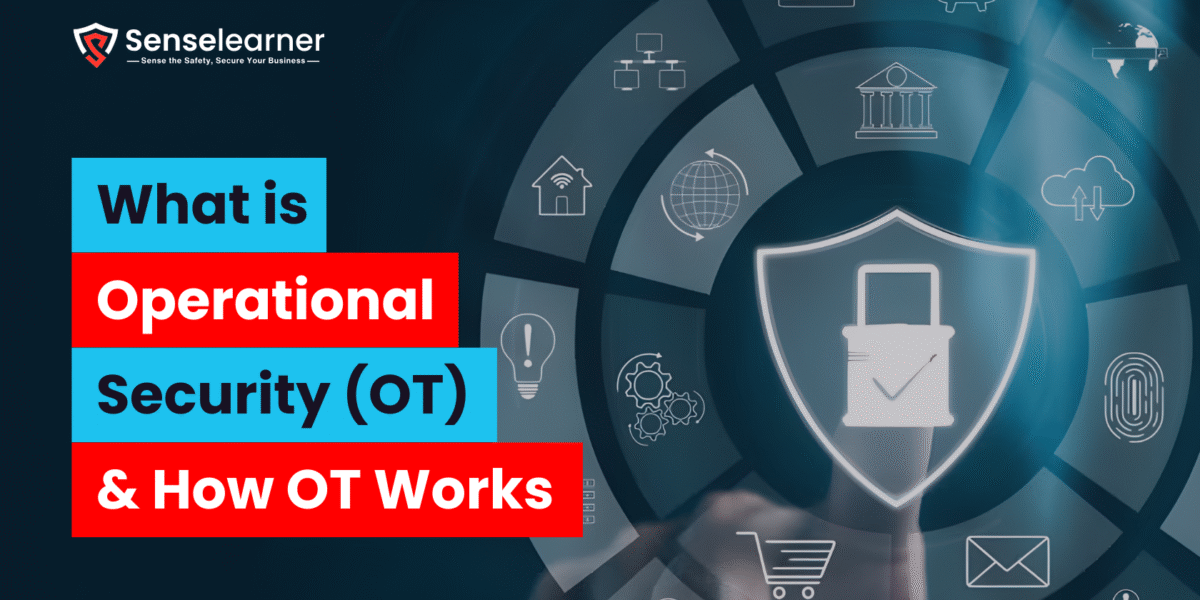Table of Contents
In today’s digital-centric environment, web application security has become fundamental to various sectors, including business, education, healthcare, finance, and entertainment. Ranging from e-commerce sites to online banking platforms, they help make our lives more interconnected and streamlined. However, as their adoption increases, so do the vulnerabilities that come with them. Safeguarding web application security has shifted from being optional to an absolute necessity for protecting sensitive information, maintaining user confidence, and ensuring seamless business operations.
This article aims to walk you through the basics of web applications, the significance of grasping web application security, the typical threats that organizations encounter, and the tactics that can enhance security measures for ongoing protection.
What is Web- Application Security?

A web application is a software solution that operates on a web server and can be accessed via a browser using the internet. Unlike conventional desktop applications, web apps do not require installation and can be utilized across multiple devices. Examples include online banking services, e-commerce websites, social networking platforms, and email applications.
Web applications are dynamic, engaging, and driven by data, which makes them valuable resources for both businesses and users. However, this inherent nature also makes them enticing targets for cyber threats.
Also Read Proton Mail Review: Is it the most secure Mail?
Why is Web- Application important?
The security of web applications is essential as most businesses depend on them to manage sensitive information such as financial data, personal information, and business transactions. In the absence of adequate security measures, these applications can easily become targets for cybercriminals, resulting in data breaches, financial losses, and damage to reputation. Robust security measures guarantee the confidentiality, integrity, and accessibility of information, safeguarding both companies and users. Additionally, it assists businesses in fulfilling compliance mandates like GDPR or PCI-DSS. Ultimately, investing in web application security fosters trust, mitigates risks, and ensures the smooth operation of digital activities.
Visit French retailer, Auchan Hit by massive Cyberattack
Common Web- Application security risks
Web applications drive a wide range of activities, from finance to retail, yet they are also subject to ongoing security challenges. Cybercriminals take advantage of weaknesses in programming, databases, to access information or interrupt services. Recognizing these prevalent threats is the initial step in creating more secure applications.
1. Zero-Day Vulnerabilities
These are security flaws that the developers of the application are unaware of, resulting in no available fix right away. Attackers rush to take advantage of these vulnerabilities before patches can be implemented, often outpacing the defenses put in place by security vendors. With thousands of such vulnerabilities identified each year, zero-days continue to pose one of the most significant threats.
2. Cross-Site Scripting (XSS)
XSS attacks enable cybercriminals to insert harmful scripts into web pages that users visit. This can result in stolen information, impersonation, or deceiving users into disclosing sensitive information. In the absence of adequate input validation, applications become exceedingly susceptible to this threat.
3. SQL Injection (SQLi)
SQLi happens when attackers exploit database queries to gain access to or alter sensitive information. By taking advantage of inadequately secured inputs, they can change permissions, steal data, or even erase essential information. Effective query management is crucial to mitigate this risk.
4. Denial-of-Service (DoS/DDoS) Attacks
These attacks flood servers with excessive traffic, causing them to slow down or crash entirely. As a result, legitimate users are denied access, which undermines trust and availability. Current DDoS strategies can circumvent conventional defenses, making prevention and mitigation essential.
What are important Web- Application Security Strategies?
- Web Application Firewalls (WAFs) assist in blocking traffic that exploits application vulnerabilities. With new threats consistently arising, WAFs provide organizations with an additional layer of protection by filtering out dubious requests.
- API gateways: They help uncover neglected ‘shadow APIs’ and block traffic that may target known or suspected API vulnerabilities, while also managing and monitoring API traffic. (Discover more about API security.)
- DNSSEC: This protocol ensures that a web application’s DNS traffic is routed correctly to the appropriate servers, preventing interception by on-path attackers.
- Encryption certificate management: A third party handles key aspects of the SSL/TLS encryption process, including generating private keys, renewing certificates, and revoking certificates that present vulnerabilities. This minimizes the risk of these elements being neglected and compromising private traffic.
- Bot management: This approach utilizes machine learning and specialized detection techniques to differentiate automated traffic from human users, blocking the former from accessing a web application. Client-side security: This process monitors for new third-party JavaScript dependencies and changes in third-party code, enabling organizations to identify malicious activities more quickly.
* DDoS- Ensuring web application security involves a variety of strategies to counteract continuously changing threats. DDoS mitigation services serve as a barrier between servers and the internet, screening harmful traffic surges before they can overwhelm systems.This is essential because traditional DDoS attacks can incapacitate even the most robust infrastructures.
Also Read 10 Best AI Code Generators Free and Paid
Best Practices for Web Application Security
- Ensuring robust security for web applications begins with consistent updates. Always update frameworks, servers, and third-party libraries to address known vulnerabilities. In addition, adhere to secure coding techniques by verifying all inputs and cleaning outputs to avert injection threats.
- Management of access is crucial—apply the principle of least privilege, ensuring that users and systems only possess the permissions needed to carry out their functions. Implement HTTPS on all pages to ensure encrypted communication between clients and servers.
Individuals continue to be the most vulnerable aspect of security, making it vital to educate teams and users to mitigate risks like phishing and unintentional data leaks. To proactively combat threats, continuously monitor and record system activities to promptly identify and address unusual behavior. Lastly, perform regular data backups to facilitate swift recovery and maintain continuity in the face of an attack or system failure.
Read what is web application security
FAQ’s
Q1. What distinguishes web application security from traditional network security?
Web application security concentrates on safeguarding the application layer (the software itself), tackling threats like SQL injection, XSS, and compromised authentication. In contrast, network security focuses on protecting infrastructure elements such as firewalls, routers, and servers. Although both aspects are crucial, web applications necessitate targeted protection since the majority of attacks exploit weaknesses at the application level.
Q2. Why is implementing a Secure Development Lifecycle (SDLC) essential for ongoing security?
An SDLC guarantees that security is considered from the outset, integrated into every stage of development—from design and coding to testing and deployment. This anticipatory strategy diminishes the likelihood of vulnerabilities making their way into production and lessens the burden of expensive corrections post-release.
Q3. What importance does user awareness hold in mitigating web application threats?
Despite having security measures, human mistakes frequently create vulnerabilities. Inadequate password practices, succumbing to phishing attacks, or improperly handling confidential information can jeopardize an application. Ongoing training and awareness initiatives equip users and employees to identify risks and engage in secure practices.
Q4. How can organizations achieve a balance between performance and web application security?
Security protocols such as encryption, firewalls, and multi-factor authentication can occasionally affect speed and user experience. The solution lies in strategizing with both performance and security considered—utilizing optimized code, efficient servers, and scalable infrastructure so that protection does not hinder usability.
Conclusion
Ensuring security for web applications is a vital investment for companies functioning in today’s digital environment. As cyber threats become more advanced and varied, businesses must adopt a proactive stance regarding their security measures. Employing comprehensive defenses such as firewalls, encryption, and continuous surveillance can avert expensive breaches and help preserve customer confidence. The advantages go beyond merely evading attacks—robust security measures support business continuity, adherence to regulations, and sustainable growth. In the end, emphasizing web application security is not merely a technical obligation but a strategic decision that safeguards your organization’s future.



